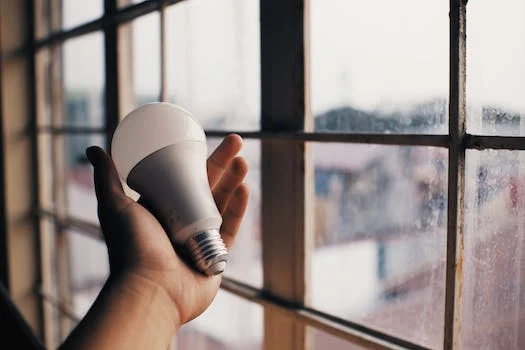Introduction: Understanding the Concept of Home Insulation
Insulation is a crucial aspect of creating an energy-efficient home. It is essentially a barrier that minimizes the heat entering your home during summer and reduces the amount of heat lost during winter. By installing proper insulation, you can maintain a comfortable temperature in your home all year round without over-relying on heating and cooling systems. This not only leads to a significant reduction in energy consumption but also decreases your carbon footprint and saves you money on energy bills. So, understanding the concept of home insulation is the first step towards a more sustainable and energy-efficient lifestyle.
The Science Behind Home Insulation: How it Works
Insulation plays a crucial role in creating an energy-efficient home by reducing the amount of heat that escapes during winter and enters during summer. This process is based on the simple science of heat transfer. Heat naturally flows from warmer to cooler areas until there is no longer a temperature difference. Insulation acts as a barrier, slowing this heat flow, thus requiring less energy to maintain your home’s temperature. It works by trapping tiny pockets of air within its material. These pockets resist the transfer of heat, maintaining your home’s warmth in winter and coolness in summer. So, a well-insulated home is not only more comfortable but also significantly reduces your energy bills.
Types of Insulation: Materials and Their Characteristics
Insulation plays a critical role in making a home energy-efficient. There are various types of insulation materials, each with its unique characteristics. The most common ones include fiberglass, mineral wool, cellulose, and polyurethane foam. Fiberglass is popular due to its fire-resistance and affordability but can cause skin irritation. Mineral wool, on the other hand, is known for its excellent fire resistance and soundproofing qualities. Cellulose is an eco-friendly option, made from recycled paper, but it’s not as fire-resistant as the other materials. Lastly, polyurethane foam offers high heat resistance and can be easily sprayed into walls and ceilings. Choosing the right insulation material for your home depends on your specific needs, budget, and the climate in your area.
The Importance of Insulation in an Energy-Efficient Home
Insulation plays a crucial role in creating an energy-efficient home. It acts like a barrier, reducing the amount of heat that escapes from your home during winter and keeping it cooler in the summer. This means you’ll use less energy for heating and cooling, which not only cuts down on your energy bills but also reduces your carbon footprint. Without proper insulation, a lot of the energy you use to heat or cool your home can be wasted. So, investing in good insulation is a smart move for your wallet and the environment.

How Insulation Contributes to Lower Energy Bills
Insulation plays a critical role in creating an energy-efficient home by reducing the amount of heat that escapes during the winter and enters during the summer. It acts as a barrier, keeping your home warm in the cold months and cool in the hot months. This results in less reliance on heating and cooling systems, which in turn lowers your energy bills. So, by investing in good-quality insulation, you can maintain a comfortable temperature in your home year-round and save money on energy costs.
Insulation and Climate: The Impact on Home Energy Efficiency
Insulation plays a crucial role in maintaining an energy-efficient home. It serves as a barrier to heat loss and gain, particularly in roofs and ceilings, walls, and floors. In a nutshell, proper insulation reduces the amount of heat that escapes from your home during winter and keeps it from getting too hot during summer. This means you won’t need to use your heating and cooling systems as much, reducing your energy consumption and saving you money on energy bills. The effectiveness of insulation is also largely influenced by the climate you live in. The colder the climate, the more insulation you’ll need to keep your home warm. On the flip side, homes in hotter climates need less insulation. Therefore, understanding your climate and having proper insulation can significantly enhance your home’s energy efficiency.
Key Areas in Your Home That Require Insulation for Energy Efficiency
To make your home energy-efficient, certain key areas need to be insulated. The attic is a primary area, as heat tends to rise and can escape through the roof without proper insulation. Walls, both exterior and interior, need insulation to prevent heat transfer, keeping your home warm in the winter and cool in the summer. Floors above unheated garages or cellars should also be insulated to prevent cold air from seeping in. Lastly, insulating your basement can prevent heat loss and keep this often chilly area comfortable. By insulating these critical areas, you can significantly reduce your energy consumption and bills.

Selecting the Right Insulation for Your Home: Factors to Consider
Choosing the right insulation for your home is crucial in creating an energy-efficient space. When selecting insulation, consider your home’s location, size, and construction. Different climates require different insulation types, so consider your local weather patterns. The size of your home and its construction can also affect the amount of insulation needed. The right insulation can reduce energy costs, maintain a comfortable temperature, and decrease your carbon footprint. Always seek professional advice to ensure you’re making the best choice for your home’s insulation needs.
Professional Installation vs. DIY: What’s Best for Your Home’s Energy Efficiency?
When it comes to improving your home’s energy efficiency, insulation plays a crucial role. The choice between professional installation and DIY depends on your specific situation. Professionals have the expertise to ensure insulation is applied appropriately, maximizing energy efficiency and potentially saving you money in the long run. On the other hand, DIY can be a cost-effective upfront solution, but it may not provide the same level of energy efficiency if not done correctly. Therefore, if you’re confident in your DIY skills and understand the ins and outs of insulation, go for it! But if you’re unsure, it might be best to hire a professional to ensure your home’s insulation contributes effectively to energy efficiency.
Conclusion: The Long-Term Benefits of an Insulated, Energy-Efficient Home
In conclusion, an insulated, energy-efficient home offers numerous long-term benefits. Not only can it significantly reduce your energy bills by maintaining a consistent indoor temperature, but it also reduces your carbon footprint, making your home more environmentally friendly. This can increase your home’s value, as energy-efficient homes are highly sought after in today’s market. Plus, the improved indoor air quality that comes with proper insulation contributes to a healthier living environment. Therefore, investing in effective insulation is a smart move for any homeowner.
